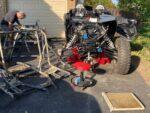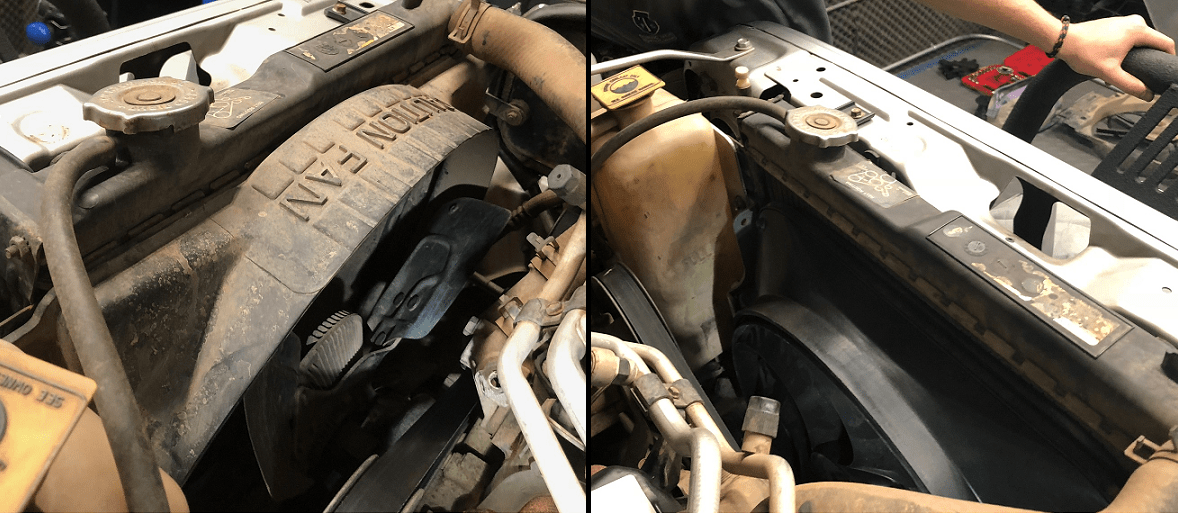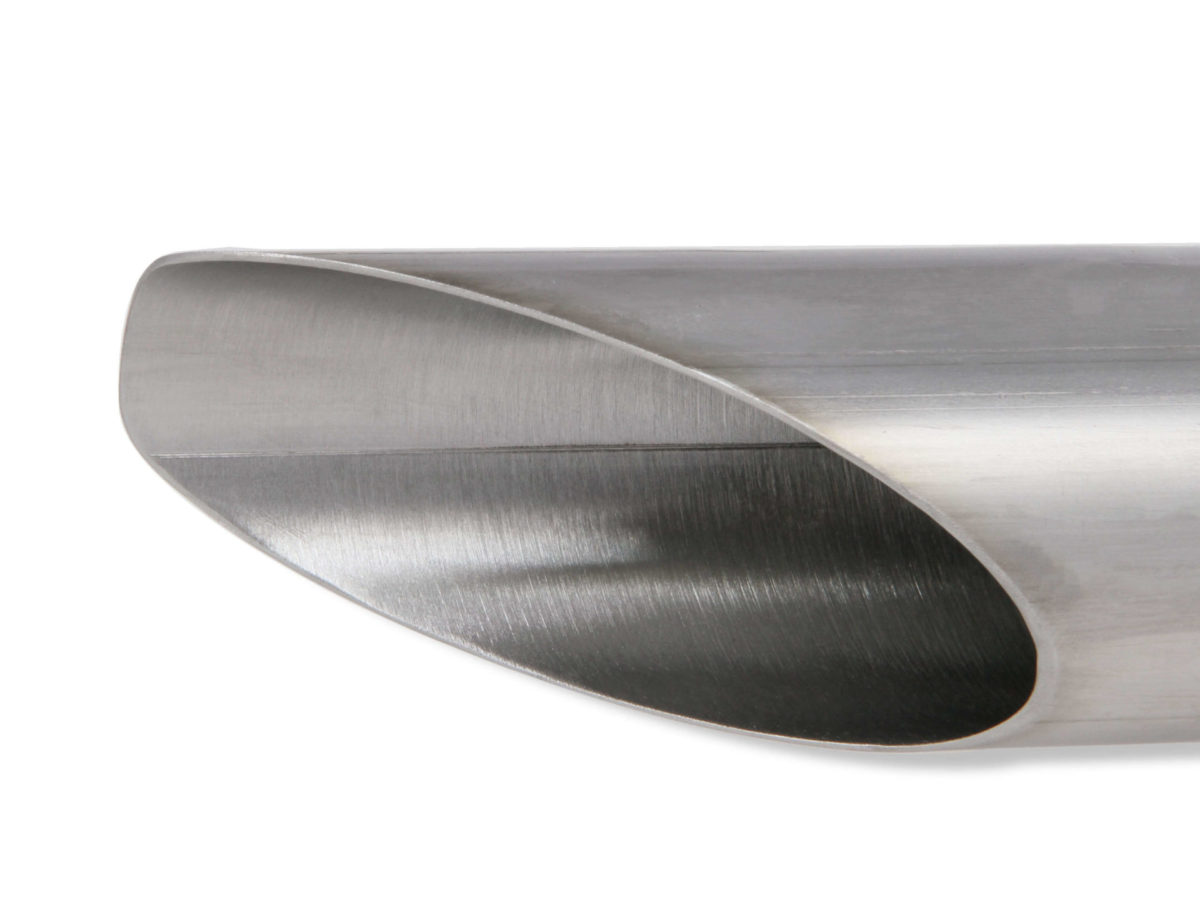Your fan isn’t often a part you think about when you’re looking for bolt-on performance parts, in fact it rarely comes to mind at all until you have a cooling or space/fitment issue. Recently though I had the opportunity to test a Jeep Wrangler before and after replacing the stock mechanical fan with an electric one and I was truly surprised at the results.
Background

I’ve run belt-driven clutch or flex fans on most of my vehicles and frankly the idea of adding another electric component always seemed unnecessary and even undesirable because I never had any over-heating issues. The one exception being I once swapped the motor on my Toyota pickup with one I pulled out of a Chevy and my fan ended up getting in a physical altercation with my radiator one day due to spacing issues… in that particular case I made the switch to electric to keep my fan from eating another radiator and at the time I didn’t even consider it could affect how much power made it to the wheels. Despite that event I kept the mindset (bias) that a mechanical fan is more reliable than an electric fan and always more than enough to cool a stock or near-stock engine. Of course once we’ve drawn a line in the sand we always seem to encounter someone on the other side of that line who has a different perspective and I eventually managed to find my way into a healthy debate with another off-road enthusiast on the pros and cons of electric vs mechanical fans. While I was admittedly bias in favor of mechanical fans, a lot of good points were brought up during our discussion, many of which I simply hadn’t considered before regarding the advantages and disadvantages of each system. Below I’ve highlighted some of the key points on the the pros and cons of mechanical clutch fans and electric fans.
Mechanical Fan (clutch)

Pros:
- Excellent cooling ability
- Mechanical fans can pull a large amount of air, especially at higher engine RPMs
- Work well even through restrictive radiators
- Reliable/Durable
- Metal construction
- Few Parts
- Inexpensive
- Simple to install/replace
Cons:
- Parasitic loss
- It takes power for your engine to physically turn the fan which translates to less power available at the wheels
- Never fully disengages
- Increases wear on other belt-driven components
- Such as water pump bearings
- Heavy
Electric Fan
Pros:

- Very little parasitic loss
- While any loss is considered a con, electric fans create far less than a mechanical fan resulting in increased power and better fuel economy
- Ability to completely disengage
- Allows for faster engine warm-up
- Only draws power when it needs to cool
- Ability to efficiently cool at low engine RPMs
- Ability to manually turn on and off
- Those that do water-crossings may be interested in the ability to disengage their electric fan to avoid pulling it into the radiator, or to keep the fan from assisting in pulling unwanted water or mud through the radiator into the engine bay
- Can often fit in spaces mechanical fans cannot
- Can push air or pull air through radiator
- Can be used as an auxiliary cooling component
- A common example is an added “pusher” on the outside of the radiator to assist another fan on the inside that is pulling
Cons:
- Electric components are inherently more susceptible to failure
- Direct bolt-in electric fans are often more costly than mechanical fans
- Places additional load on alternator
- Electric fans generally draw between 15 and 35 amps creating some parasitic loss
Testing
Now looking at the above list it seems as if the benefits are heavily in the electric fans favor. That being said I have nightmares about electrical gremlins (my own incompetence at being able to wire electric components properly) and place a huge value on having bullet-proof parts on my rigs that are unlikely, or at least less-likely to fail on me out on the trail. I also felt that any parasitic loss, while undeniable, would be small and probably negligible. Of course I like to see hard evidence and numbers rather than rely on theory and opinion so I passively kept my eye out for an electric fan to test until eventually I found someone parting a Jeep and that had an electric fan designed for my application. This presented a good opportunity to put the debate on power differences between a mechanical and electric fans to rest so I jumped on it. After obtaining the fan I could think of no better place to go than Tuning Tech FS and do a few pulls before and after the swap on their DynoCom DC-5000.
If you look at the results below you’ll see that swapping fans yielded a gain of about 3 horsepower and 10 foot pounds of torque. This may not seem like a huge deal but when you consider that with all the added weight and massive tires on this rig it was originally only putting 88 horses and 114 foot pounds of torque to the wheel that is quite significant. In fact its a 3.85% gain in HP and 8.93% gain in Torque, meaning this is a difference I could actually feel when I pushed the skinny pedal.

Wrap Up
I can still go back and forth on the other pros and cons of a mechanical vs electrical fan and while my wallet often reminds me “don’t fix it if it isn’t broken”, the numbers don’t lie and there is certainly performance to be gained from the removal of the heavy stock clutch fan. If you have the opportunity to make the switch I can say it’s something I would recommend as long as you pair an appropriately sized fan that can easily move enough cubic feet a minute (CFM) of air to cool your application.









